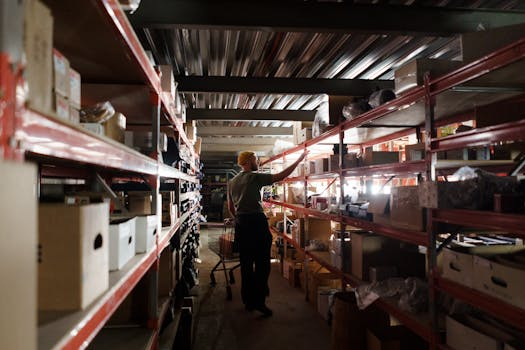How Retailers Are Using Predictive Analytics to Stock Shelves
In today’s competitive retail landscape, staying ahead of the game is crucial for success. With consumer behavior constantly evolving, retailers are always looking for ways to improve their operations and meet the demands of their customers. One way they are achieving this is through the use of predictive analytics. This powerful tool allows retailers to analyze data and make informed decisions in stocking their shelves. In this article, we’ll take a closer look at how retailers are using predictive analytics to stock their shelves and the benefits it can bring.
The Use of Predictive Analytics in Retail
Predictive analytics is the practice of using data, statistical algorithms, and machine learning techniques to identify the likelihood of future outcomes based on historical data. In the retail industry, this means using customer data, sales figures, and inventory information to predict future buying patterns and stock levels. Retailers can then use these insights to make smart decisions on what products to stock, in what quantities, and when.
Gaining a Competitive Edge
The use of predictive analytics in retail is becoming more prevalent as retailers strive to gain a competitive edge. By analyzing data, retailers can forecast the demand for specific products and adjust their inventory levels accordingly. This not only helps to ensure that shelves are well-stocked, but also prevents overstocking and wastage. With this data-driven approach, retailers can optimize their inventory and stay one step ahead of their competitors.
Improved Customer Experience
Another benefit of using predictive analytics in retail is that it can improve the overall customer experience. By having the right products in stock at all times, retailers can meet the demands of their customers and reduce wait times. This translates to a more positive shopping experience and increased customer satisfaction. By using predictive analytics, retailers can also identify trends and preferences of their customers, allowing them to tailor their product offerings and promotions to better meet their needs.
Quick Response to Changing Trends
One of the biggest challenges retailers face when stocking their shelves is keeping up with changing trends. Predictive analytics allows retailers to have a better understanding of what products are popular and what is likely to become popular in the near future. If a particular trend is expected to surge, retailers can quickly make adjustments to their inventory and ensure they have enough stock to meet the demand. This not only allows them to capitalize on current trends but also gives them a head start on preparing for future ones.
Implementing Predictive Analytics in Retail
Now that we understand the benefits of using predictive analytics in retail, the question is, how can retailers implement it in their operations? The first step is to collect data. Retailers need to gather customer data, sales figures, and inventory information to build a strong foundation for their predictions. This can be done through various methods such as loyalty programs, point-of-sale systems, and tracking customer behavior online.
Next, retailers need to utilize predictive analytics tools and software to analyze this data. These tools use complex algorithms and machine learning techniques to generate accurate predictions. Retailers also need to have a solid understanding of their industry and target market to properly interpret the data and make informed decisions.
Challenges of Using Predictive Analytics in Retail
While the benefits of using predictive analytics in retail are clear, there are still some challenges that retailers may face. One of the main challenges is the quality and quantity of data. Without reliable and sufficient data, predictive analytics cannot effectively generate accurate predictions. Another challenge is the ability to interpret and utilize the results correctly. Retailers must have the expertise and resources to analyze the data and make strategic decisions based on the insights provided.
Conclusion
Predictive analytics is undoubtedly a powerful tool that retailers can use to stock their shelves more efficiently. Not only does it allow them to stay ahead of emerging trends, but it also helps to improve the customer experience and gain a competitive edge. While there may be challenges, the benefits of using predictive analytics far outweigh them. As technology continues to advance, we can expect to see more retailers utilizing predictive analytics to drive their business forward.









